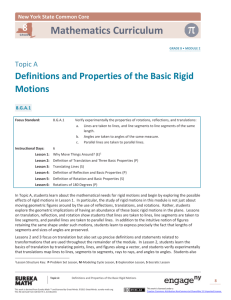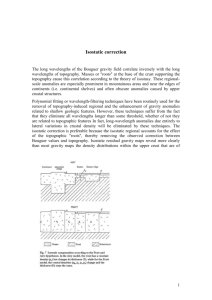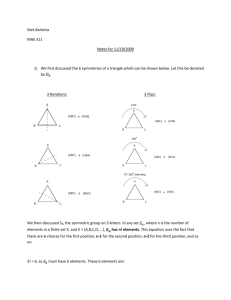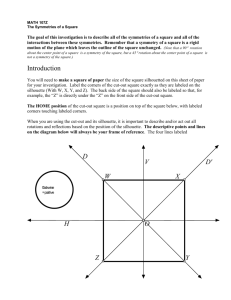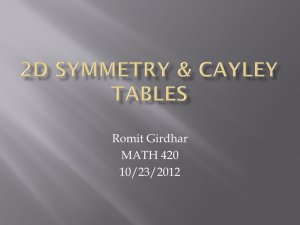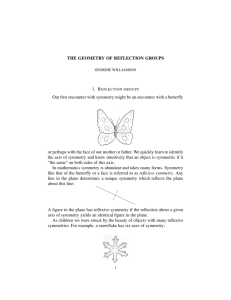Symmetry & boundary conditions
advertisement
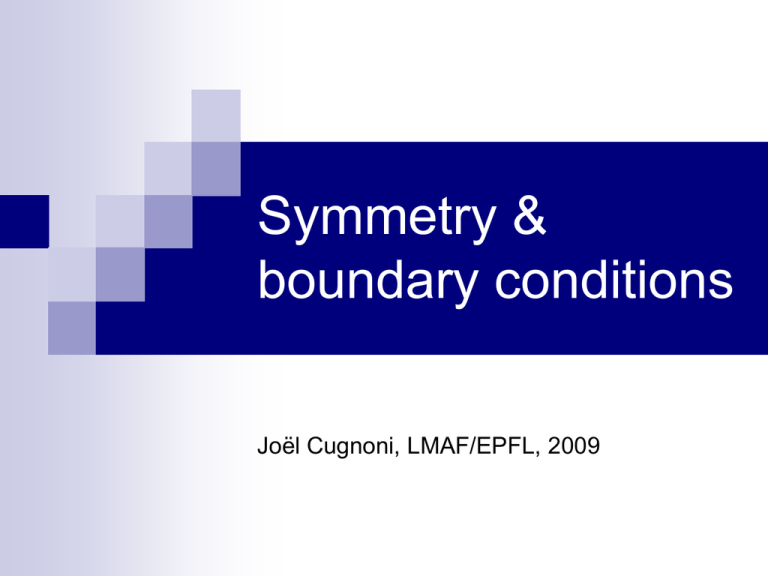
Symmetry & boundary conditions Joël Cugnoni, LMAF/EPFL, 2009 Using symmetries in FE models A FE model is symmetric if and only if geometry, materials and loading are symmetric !! Symmetries help to: Reduce the model size => finer meshes => better accuracy! Simplify the definition of isostatic boundary conditions Reduce the post-processing effort (simpler to visualize) Show to everybody that you master FE modelling ;-) Using symmetries in FE models To use symmetries: Extract the smallest possible geometric region with « CAD » cut operations (can have multiple symmetries!!) Model the symmetry planes as imposed displacement / rotations: No displacement perpendicular to symm. plane No rotations (shell / beams only) along 2 axis in the symm. Plane Example: X-symmetry = symmetry wrt a plane of normal along X => U1 = UR2 = UR3 =0 ALWAYS USE SYMMETRIES WHENEVER POSSIBLE !!! (This will be check at the exams) Symmetry: example U normal = 0 UR inplane = 0 Rigid body motions In statics, rigid body motions are responsible for singular stiffness matrices => no solution In statics, YOU MUST CONSTRAIN all 6 rigid body motions with suitable boundary conditions. If you don’t want to introduce additionnal stresses: use isostatic BC 90 % of the « the solver does not want to converge » problems come from rigid body motions !! => Always double check your boundary conditions The 3-2-1 trick Is a simple trick to set isostatic boundary conditions: Select 3 points (forming a plane) On a 1st point: block 3 displacements => all translation are constrained On a 2nd point, block 2 displacements to prevent 2 rotations On a 3rd point, block 1 displacement to block the last rotation. Isostatic BC: Example of 3-2-1 rule U1=U2=U3=0 U2=0 Using the 3-2-1 trick, we introduce isostatic supports which do not overconstrain the system F1 U2=U3=0 F2 Loads F1 + F2 = 0 But system cannot be solved because of rigid body motions Loading: standard type of loads Pressure: Surface tractions: Units: force / area Can be freely oriented: define Gravity: Units: force / area Is always NORMAL to the surface Positive towards the Inside Non uniform distribution with analytical fields function of coordinates Units: L/T^2 Defines the accelaration vector of gravity loads. You must define a Density in material properties Acceleration, Centrifugal loads … Demo & tutorials Demo of Rod FEA Use partitions to create loading surfaces Use surface tractions Show rigid body motion = solver problem Use 3-2-1 rule to set isostatic BC Video tutorial BC-Tutorial: Use symmetries Use cylindrical coordinate systems to apply BC Apply non-uniform load distributions
